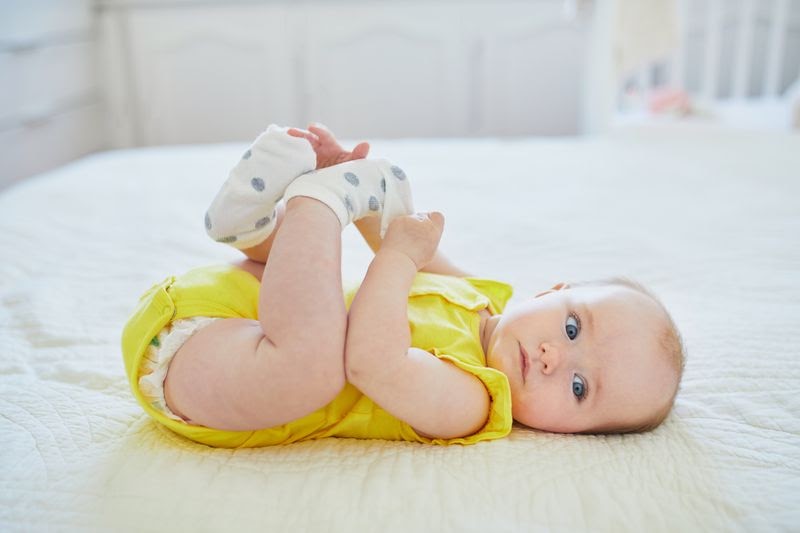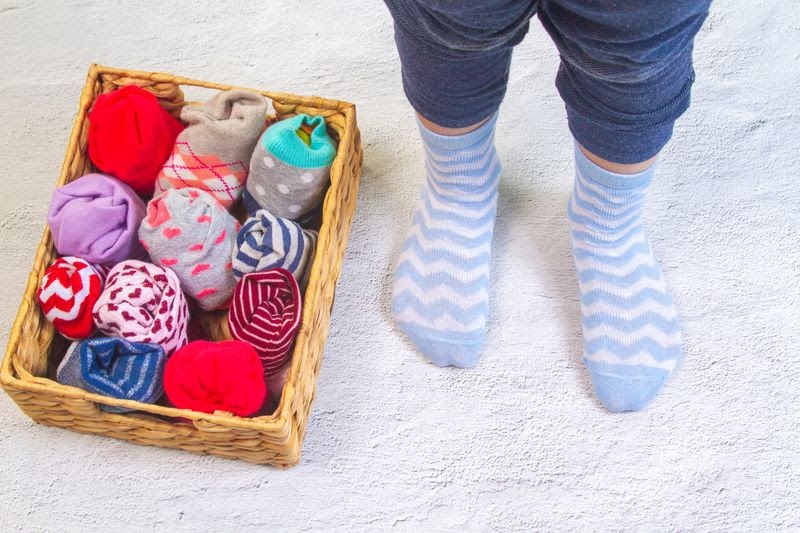
Socks have a lot of features that make your baby’s life a breeze. They regulate body temperature and give your baby a nice, comfortable sleep. They also keep their sensitive feet warm and snug in cold weather and protect your baby from mosquito bites, ground bacteria, and pointed objects lying on the ground.
You may be aware of all these benefits, but your baby is not. All they know is that they do not like socks, and they want them off their feet.
You can’t argue with your baby about how socks benefit them, so your best bet is getting the best baby socks that stay on. Read on to stay on top of keeping your child safe and snug.
Why Babies Take Their Socks Off
It can be annoying when your baby does not like socks. One moment you leave your baby’s feet covered in socks; the next, you’re looking under peculiar places for a missing sock pair.
It’s astonishing how that can consume your time and energy. Still, you can’t help but worry every time your baby’s socks come off.
Your concern is valid. But why do babies keep removing their socks? Here are several reasons.
The socks irritate the skin.
One of the main reasons why babies take their socks off is friction. The cloth material rubs against their foot and ankle skin, leaving red marks or patches that lead to irritation.
It’s simply uncomfortable for them.
Infants who have sensory issues may remove their socks repeatedly because they feel uncomfortable with any sensation on their feet. Your baby likely prefers smooth and cool textures, and the socks are not giving them that.
Their feet might be itchy.
Sometimes babies remove their socks to scratch their feet or toes! Scratching an itch is an instinct, and that instinct tells your baby to remove anything that hinders access to the itchy area.
Their feet feel hot when they wear them.
Socks that have too thick a material may be trapping the heat coming out of your baby’s foot. Plus, being in a warm place may exacerbate the situation. As a result, your baby may feel hot in the foot and ankle area, causing them to pull their socks off.

The Solution: Nonslip Socks with Grips
Parents who see the importance of having their babies wear socks must use nonslip baby socks with grips. It solves plenty of concerns surrounding your baby’s resistance to wearing a cloth around their foot.
But you should not just buy any nonslip grip socks. Instead, you should buy the best infant socks that stay on until it’s time to take them off. Here are the features that make the best baby socks.
It has to be made of cotton.
The best infant socks should be at least 75% cotton. Polyester and spandex give the socks a stretchy feel, but the soft cotton makes them comfortable to wear.
It should stay on comfortably for a long time.
Anti-slip ankle socks have a flexible spandex material that holds onto your baby’s foot and ankle, making them the best baby socks for staying on for long periods.
The anti-slip grip, meanwhile, prevents your baby from accidentally taking off the socks while sleeping or walking across the floor. With this grip, you won’t have to turn your house upside down to look for missing socks.
It should prevent your baby from slipping.
The best socks for your toddler should have nonskid patterns on the soles so that they can walk or run freely on any smooth surfaces without slipping.
Having your child slip and bump their heads on the floor is very dangerous. Thus, it is important to get your baby boy or baby girl nonslip socks to keep your child safe when they are in the mood to explore indoors.
It should last long.
The cotton blend material should not only be comfortable but also made to last long as your baby grows. Thus, the socks should have considerable wiggle room so that your baby can keep using them at least until they are 32 months old.
It should prevent babies from taking them off.
The nonslip grip feature prevents accidental removal of socks, but the best socks can also prevent babies from taking them off.
Babyproof socks have an elastic strap that runs around your baby’s foot, making them look like ballet shoes. Thus, even if your kid tries to pull the socks off, this strap will keep them locked on their feet.

Tips When Putting Socks On Your Baby’s Feet
If you haven’t found the time to shop around for nonslip grip socks, you’ll have to make do with what you have for now. It’s tiring to go through the seemingly endless routine of putting socks on your child only for them to be taken off.
Perhaps a change of method will break the cycle. Here are some of the tips we’ve gathered from parents who have the same struggle.
Use different socks for sleeping and for walking.
You should have at least two pairs of organic cotton socks for your baby. Each should have exclusive use, either for bedtime or for daytime activities. Just imagine yourself using your bathroom flip-flops in your bedroom, and you’ll understand how it feels for your baby, especially if they have a sensitive tactile sense.
Bacterial infection is another concern. Socks used for walking around the house accumulate bacteria, and if your child uses the same socks during sleep, they may become a source of illness. So keep a pair for bedtime and another for playtime.
Make sure the socks are loose enough to allow movement.
Parents’ and doctors’ concerns regarding babies wearing socks are due to foot development. Doctors actually recommend babies and toddlers not to wear socks as much as possible. Yet, sometimes it’s necessary. As a compromise, get socks that fit loosely to protect your child while allowing their feet the full range of motion.
Make sure the anti-slip grip isn’t too tight.
If you already have anti-slip grip socks for your baby and they’re constantly taking them off, consider that it may be too tight. Check the grip lining on your baby’s skin. If it leaves a red mark across the ankle, it is too tight. Best buy a new one because the one you have can cause sock-line hyperpigmentation that leaves a permanent mark.
Check the seams inside the socks.
Some socks have loose threads inside, and these can make your baby feel uncomfortable. The solution is to turn the socks inside out before putting them on your baby’s foot so that they won’t feel the loose threads touching their feet.
Clip your baby’s nails.
Check if your baby’s nails are grown. The nail may be hooking onto the seams inside the sock, causing discomfort. Gently clipping your baby’s nails will help.
Put the socks on while your baby is asleep.
If you can’t seem to find what works for your baby, you can try a bit of trickery. First, put your baby to sleep without socks on. Then, once they’re fast asleep, sneak that pair of socks onto their feet. By the time they wake up, the socks have already served their function.
Get Comfortable Baby Socks from Ashtonbee
Your baby is approaching a stage in their development where shoes will play a huge part. Socks are the way to make a gentle introduction. That’s why you need to help your baby learn to like wearing socks.
It doesn’t have to be a painful chore. By getting Ashtonbee’s baby socks with grips, you can train your baby to wear socks and acquire a taste for comfort and safety.
Regain your control and peace of mind, and get a pair today!



